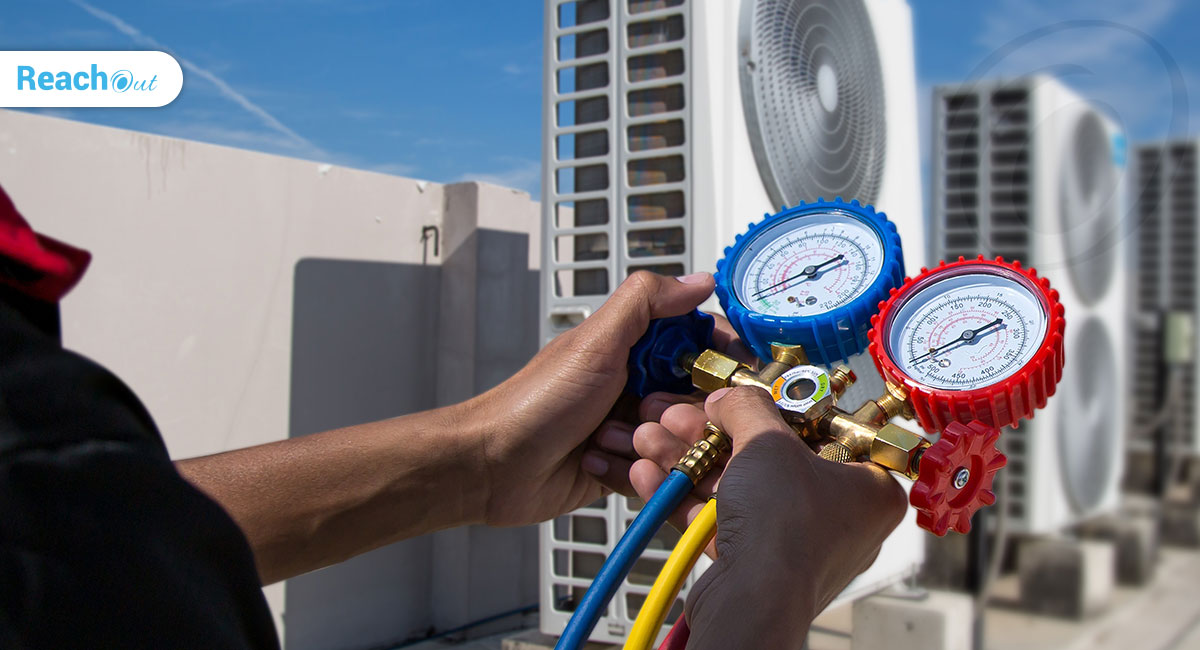
One of the main challenges HVAC businesses face is ensuring effective communication. When technicians are always on the move, it’s difficult for the office to quickly connect with them. It gets tedious to sometimes effectively communicate about emergency tasks or new updates on existing jobs.
HVAC software bridges the gap between technicians and dispatchers. When dispatchers and field technicians communicate through the application, the process becomes streamlined. Scheduling, dispatching, and operations get an efficient boost. There are mix-ups and work execution speeds up. Collaboration improves. The back office processing, including compliance and customer engagement, also gets a big boost.
Why Gaps Exist Between Technicians and Dispatchers Commonplace in HVAC Field Service
One of the most common pain points of the HVAC business is seamless communication between the office and the field. Dispatchers and managers remain in the office. But repairs and installation work take place at customer premises. Such work sites are often far away from the office and often at remote locations. Seamless and reliable operations depend on dispatchers having real-time communication with field technicians.
One option is to rely on generic chat applications, SMS messages, or make phone calls. But such channels are not always reliable, and actually increase the scope of communication gaps and delays.
Common Communication Challenges In HVAC
Dispatchers find it difficult to keep track of communications from multiple field technicians. Some important communications slip through the gap. The dispatchers, being human, inevitably forget something despite their focus.
- Poor Traceability: It’s common in HVAC businesses to use multiple communication channels. Although it enables prompt communications, tracing back its path is often tricky. Such restrictions can lead to losing important information, attached images, videos, or queries.
- Lack of Ready Access to Information: Field technicians do not have ready access to information. They have to make specific requests every time. The process wastes time and effort. Also, communication is not always instant or reliable. Supervisors may not be able to connect with the field technicians when needed to convey an important update.
The Importance of Ready Access to Critical Information
Dispatchers need real-time updates to assign jobs and direct technicians to the correct location. They need ready access to accurate information, such as:
- Whether a technician is free to take up the job at any specific time. The availability of a technician depends on shift timings, holidays, assigned work, and any upcoming leaves.
- The nature of the job. For instance, emergency jobs may need diverting the nearest available technicians to the site.
- Whether the technician has the skills or certifications required for the job.
- The availability of equipment and spares for the technician to execute the job.
Also, set schedules can change at times. The customer may request a change. The assigned technician may call in sick. Inclement weather may cause delays, leading to the technicians not completing all assigned jobs on a shift.
The Drawbacks of Relying on Spreadsheets or Other Manual Methods
Many schedulers assign jobs to technicians using spreadsheets and phone calls. It becomes difficult to consider all these permutations and combinations with such aids. They work on assumptions. Mix-ups and mistakes become commonplace. For instance, technicians may receive incorrect addresses. Or the dispatcher may assign them the wrong job. The process anyway takes a long time.
How HVAC Software Improves the Process
HVAC software streamlines and speeds up the process.
Schedulers get integrated calendar views that show the latest position. They also get easy drag-and-drop interfaces to assign jobs.
Automated notifications to the field technician’s smartphones keep them up-to-date. They get instant alerts on all job assignments and changes.
Integrated inventory management allows dispatchers to assign jobs after confirming parts availability. Instances of technicians having to abort work and reschedule a visit get eliminated. Such rescheduling leads to big waste and inefficiency.
Integrated maps guide technicians through the best routes to their worksites. Clear instructions help them save fuel and time.
1. Accessing Essential Information
Technicians can use the app to download the work order, service instructions, and other essential information. They do not have to waste time seeking clarification from whoever is present on-site or make guesses.
2. Electronic Data Collection
Technicians can also use the app to collect data such as electronic signature and before-after photographs. These data serve as proof of work execution or offer status updates to stakeholders. They can upload the same to the integrated CRM and send instant reports.
3. Engaging with Remote Experts
Technicians often encounter unexpected roadblocks when carrying out their jobs. The HVAC software allows them to engage with remote experts in such situations.
The dedicated communication channel offered by the app makes such collaboration hassle-free. Technicians do not have to waste time or stress out to seek the right contact details.
4. Friction-Free Compliance
HVAC businesses have to comply with several regulations. They need to follow safety mandates, energy efficiency standards, and more. Additionally, service providers frequently deal with dangerous substances like refrigerants. There are rules and difficulties specific to handling these materials.
That’s why it’s important to clearly communicate about safety procedures and possible hazards.
Operational safety can be assured only by adhering to safety and compliance regulations. Any sort of miscommunication may cause mishaps and penalties.
5. Seamless Auditing and Compliance
HVAC software makes compliance easy. Service managers can create forms and checklists that detail the steps to follow or the safeguards to take. Field technicians can access these resources through their smartphones. They can also capture electronic data and generate accurate compliance reports.
A clear visual interface makes accessing information through the smartphone apps easy. Technicians do not have to grapple with reams of paper.
6. Digital Documentation
The field service suite enables digital documentation. Technicians capture electronic data, including photos and videos. They generate digital reports out of such data and email it to recipients on-the-fly. The entire system of reporting becomes faster and more accurate. Up-to-date and synced information related to repairs made makes teamwork seamless.
7. Improved Customer Engagement
Promoting internal efficiency is useless without customer-centricity. In fact, focusing on internal efficiency without understanding customer needs can become counterproductive. The business may prioritize its internal processes, which may not actually be the best for the customer.
Field service software combines efficiency improvements while keeping the customer in mind.
8. Self-Service Options
Self-service portals allow customers to raise service requests without dealing with an intermediary. They can log-in and make a service request without hassles.
9. Integrated Ticket Management
An integrated ticket management system makes follow-up easy. The system logs in all client requests and improves visibility. Dispatchers can easily schedule jobs, and managers can make easy follow-ups. Customers too can get live status at any time.
10. Automated Invoicing
Automation makes communication accurate and removes any communication gaps. A key manifestation of the same is invoicing.
Upon work completion, technicians can use their HVAC software app to auto-generate invoices.
The backend system keeps track of the time the technicians spent on the customer premises. Such automated timesheets ensure billing the client the correct number of hours worked. Manual communication of such critical information could lead to mistakes.
The system collates such information, auto-generates the invoice, and emails it to the customer.
In Conclusion
In today’s competitive business environment, only the hyper-efficient survive. And eradicating communication gaps is the key to field service efficiency. HVAC businesses that invest in robust field service software do themselves a favor. Streamlined collaboration enabled by HVAC software increases workforce productivity and efficiency.
With fewer errors, mix-ups, and misunderstandings, the cost and time to complete tasks are reduced. The indirect goes much further. Improving communication simplifies work, reduces miscommunications, and improves employee retention. Clear and transparent communication builds trust and improves business performance.
Explore your opportunities with ReachOut today! Request a Free Demo!
Archana
Archana is a Digital Marketing Executive at ReachOut Suite, where she focuses on SEO, branding, and content marketing. She works on enhancing website performance, increasing online engagement, and shaping effective brand strategies. Archana also leads social media campaigns and leverages marketing insights to strengthen the company’s digital presence.
More posts by Archana


